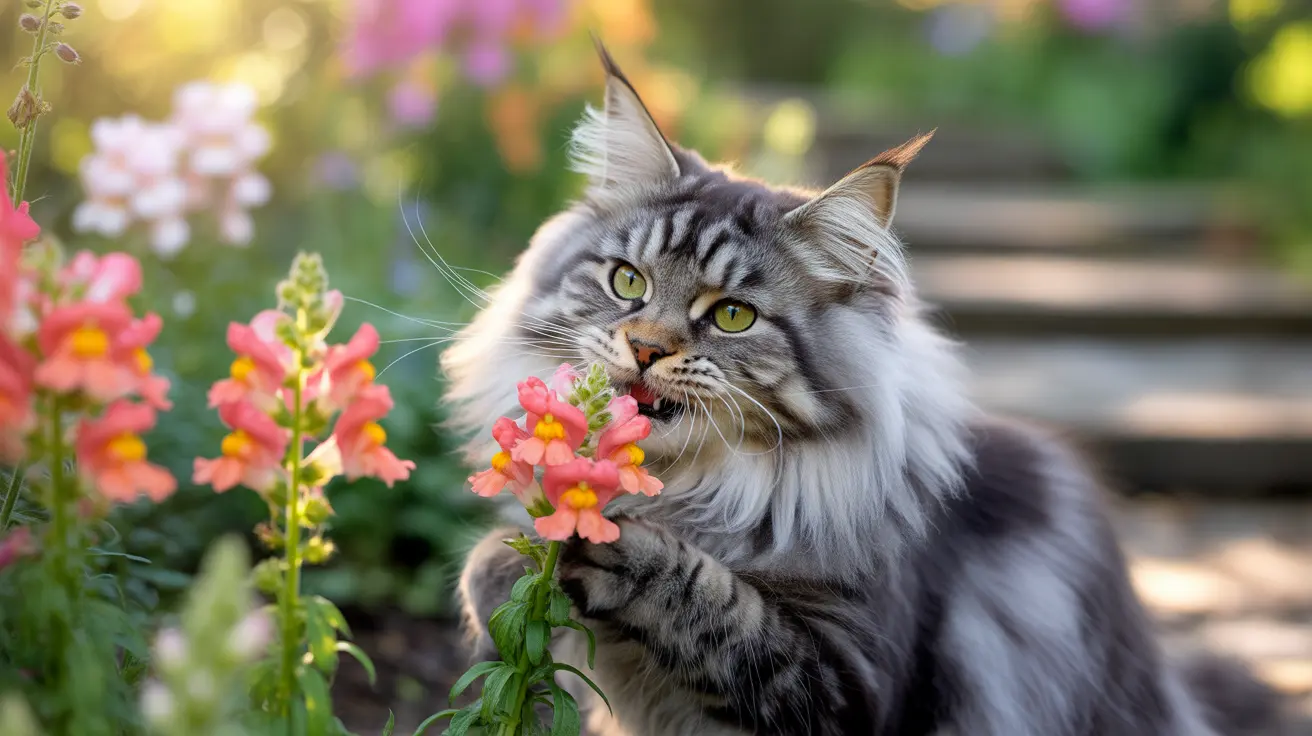Introduction
If you're a cat owner who loves gardening, you've likely wondered about the safety of various plants around your feline friends. Snapdragons (Antirrhinum majus), with their vibrant colors and whimsical dragon-shaped blooms, are popular garden choices. But are they safe for your curious cat who might decide to take a nibble?
The good news is that snapdragons are completely non-toxic to cats, making them an excellent choice for pet-friendly gardens. Let's explore everything you need to know about these beautiful flowers and their relationship with our feline companions.
Understanding Snapdragon Safety for Cats
Snapdragons have been thoroughly researched and are officially classified as non-toxic to cats by the ASPCA (American Society for the Prevention of Cruelty to Animals). This means that every part of the plant - from the flowers and leaves to the stems and seeds - is safe for your cat if ingested.
While snapdragons won't cause toxic reactions, it's important to note that consuming any plant material in large quantities could cause mild stomach upset in cats. This isn't due to toxicity but rather the cat's digestive system processing unfamiliar plant matter.
Health Considerations When Growing Snapdragons
Natural Plant Interactions
Cats are naturally curious creatures, and many enjoy nibbling on plants. Snapdragons' mildly bitter taste usually discourages excessive consumption, making them a practical choice for garden beds and outdoor spaces.
Chemical Concerns
While the plants themselves are safe, any pesticides or chemical fertilizers used on snapdragons could be harmful to cats. Always opt for pet-safe gardening products when maintaining your garden, and consider organic alternatives when possible.
Creating a Cat-Safe Garden Environment
Safe Plant Companions
When planning your garden, consider combining snapdragons with other cat-safe flowers such as:
- Petunias
- Zinnias
- African Violets
- Roses (without thorns)
- Sunflowers
Protective Measures
To prevent your cat from overindulging in garden plants, consider these strategies:
- Create dedicated cat grass areas
- Use natural deterrent sprays
- Install physical barriers around garden beds
- Provide alternative enrichment activities
Monitoring Your Cat's Plant Interactions
While snapdragons are safe, it's still important to observe your cat's behavior around plants. Watch for any unusual symptoms such as:
- Excessive drooling
- Vomiting
- Changes in appetite
- Lethargy
- Diarrhea
Frequently Asked Questions
Are snapdragons toxic or harmful to cats if they chew on the flowers or leaves?
No, snapdragons are not toxic to cats. All parts of the plant are safe if ingested, though excessive consumption might cause mild stomach upset.
What symptoms might a cat show if it eats a large amount of snapdragons?
While not toxic, eating large amounts of any plant material might cause temporary digestive upset, including mild vomiting or diarrhea. These symptoms typically resolve on their own.
Can using pesticides or fertilizers on snapdragons pose a risk to my cat's health?
Yes, chemical pesticides and fertilizers can be harmful to cats. Always use pet-safe, organic gardening products and keep cats away from recently treated plants.
What are some safe, non-toxic flowers I can plant alongside snapdragons in a cat-friendly garden?
Safe options include petunias, zinnias, African violets, roses (thornless varieties), sunflowers, and marigolds. Always verify plant safety through the ASPCA's toxic plant database.
How can I prevent my cat from over-chewing snapdragons and other non-toxic plants in my garden?
Use natural deterrent sprays, create physical barriers, provide alternative enrichment activities, and maintain dedicated cat grass areas to redirect your cat's plant-chewing behavior.
Conclusion
Snapdragons are a wonderful choice for cat-friendly gardens, offering beauty without the worry of toxicity. By following proper gardening practices and monitoring your cat's interactions with plants, you can create a safe and enjoyable outdoor space for both you and your feline friend. Remember to always consult with your veterinarian if you have specific concerns about your cat's plant-eating habits or if they show any unusual symptoms.






